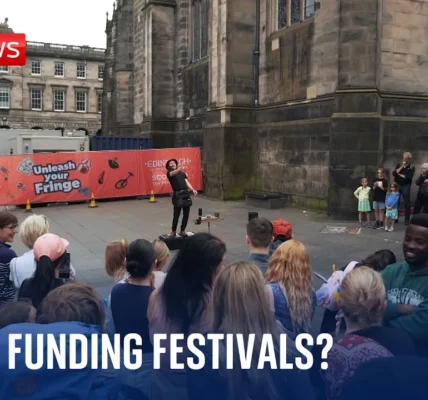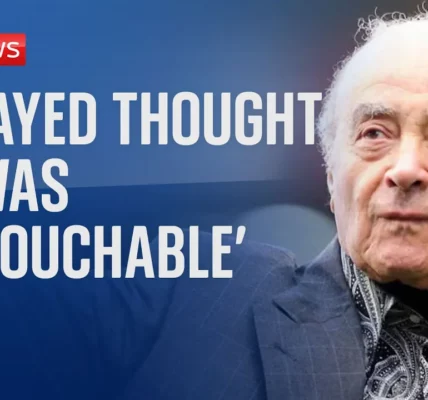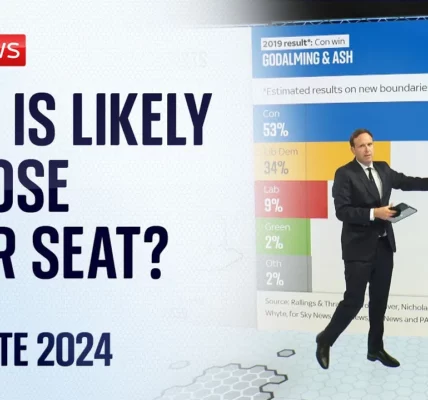Who is Hassan Nasrallah? Hezbollah’s Elusive Leader and Israel’s Reported Target

Explore the life and influence of Hassan Nasrallah, the leader of Hezbollah, and the implications of ongoing military strikes in Lebanon as tensions escalate in the region.
Introduction
Hassan Nasrallah, a name synonymous with Hezbollah, has been a pivotal figure in Middle Eastern politics since he became the organization’s leader in 1992. Assuming command at just 32 years old following the assassination of his predecessor, Nasrallah has remained an elusive presence, primarily communicating through managed live streams. His leadership has transformed Hezbollah into a formidable military and political force, supported by Iran, while becoming a significant target for Israel. This article delves into his background, Hezbollah’s military capabilities, and the current state of affairs in Lebanon amid escalating violence.
The Rise of Hassan Nasrallah
Hassan Nasrallah’s ascent to power was marked by a series of strategic moves that solidified Hezbollah’s position within Lebanon and the broader Middle East. His leadership style and strategic alliances have played crucial roles in shaping the group’s identity and objectives.
Background and Leadership
Born in 1960 in the southern suburbs of Beirut, Nasrallah has been deeply involved in Shiite activism from a young age. His leadership of Hezbollah began in the wake of significant political unrest and violence:
- 1992: Becomes the Secretary-General of Hezbollah
- 1994: Survives an assassination attempt, leading to his decision to avoid public appearances
- 2000: Celebrates the withdrawal of Israeli forces from southern Lebanon, cementing his popularity
Influence of Iran
Under Nasrallah’s leadership, Hezbollah has received substantial support from Iran. This relationship has allowed the group to:
- Acquire advanced military technology
- Train militia groups in different regions, including Iraq and Yemen
- Establish a network of alliances with other militant groups
Hezbollah’s Military Capabilities
Hezbollah is widely recognized as the most powerful non-state military actor in the Middle East. This section examines the group’s military capabilities, including their arsenal and strategic operations.
Missile and Rocket Stockpile
Hezbollah’s military strength is largely attributed to its extensive stockpile of missiles and rockets, primarily sourced from Iran. The implications of this arsenal are profound, especially regarding Israel:
- Deployment of precision-guided missiles
- Capability to launch attacks on Israeli territory
- Involvement in regional conflicts, leveraging its military resources
Training and Operations
Hezbollah has played a significant role in training various militia groups, which has expanded its influence beyond Lebanon:
- Training Hamas fighters for operations against Israel
- Assisting Shiite militias in Iraq during the fight against ISIS
- Providing support to Houthi rebels in Yemen
The Current Situation in Lebanon
The recent military strikes in Lebanon have heightened tensions and led to widespread panic among the civilian population. As reported by Sky News correspondent Alex Crawford, the situation is dire, with significant repercussions for the country.
Impact of Recent Attacks
The airstrikes have caused extensive damage and led to mass displacement:
- Destruction of key infrastructures, including hotels and residential buildings
- Large numbers of displaced individuals seeking refuge in safer areas
- Heightened anxiety among civilians, many of whom have lost everything
Public Sentiment
The reactions among the Lebanese population are mixed, with many expressing fear and anger:
- Criticism of Hezbollah for provoking Israeli attacks
- Fear of further escalations and potential ground invasions by Israel
- Calls for international support and intervention to protect civilians
Conclusion
Hassan Nasrallah stands at the center of a complex web of political, military, and social dynamics in the Middle East. His leadership of Hezbollah has transformed the group into a powerful entity that continues to influence regional conflicts. The ongoing violence in Lebanon underscores the precarious situation faced by civilians caught in the crossfire. As tensions rise, it is crucial for international observers to pay attention to the developments in Lebanon and support efforts to achieve peace and stability. For further insights into the Middle East’s geopolitical landscape, check out our related articles.
“`




